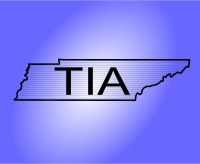August 2012 Business Models
The August 18 meeting of the TIA featured a presentation by Mike Thompson, who last spoke before the TIA in May 2012. Mike is a marketing professor at the Cedar Bluff Campus of Lincoln Memorial University.
Mike is a golfer. He also has a creative mind. In his search for a new product, he looked at what needs to change with his sport. He considered the human element because, generally, golf equipment is tested by machines to remove the human element. A good example is how golf clubs are tested. A machine swings the club the same way every time. The human element is removed.
Mike saw opportunity by addressing how humans interact with their golf equipment. He came up with a new putter design that helped golfers swing better. His invention was to shift weight to the handle from the head of the club.
 After this introduction, Mike discussed business models. He used the Business Model Canvas to demonstrate how he though businesses should develop and operate. A copy of his handout is to the right.
After this introduction, Mike discussed business models. He used the Business Model Canvas to demonstrate how he though businesses should develop and operate. A copy of his handout is to the right.
Download a copy of the Business Model Canvas.
Mike described the 9 things that make up the business model:
-
Customer Segments: There is no such thing as a universal product. That is, there is no one product that everyone will buy. Instead a particular product will appeal to a group of people. These groups need to be identified. It is best to target the market, and to make the market small.
-
Customer Relationships: identify the customer, that is, who will actually buy the product.
-
Value Propositions: identify the value of the product and ask why would a customer buy it.
-
Key Partners: identify the people and companies that are needed to get things done.
-
Key Activities: identify the important things that need to be done.
-
Key Resources: identify the things that are needed, such as the infrastructure that needs to be built.
-
Channels: identify the ways that products and materials move, for example, how the customer finds and buys the product.
-
Revenue Streams: identify where the money comes from, how profit is made.
- Cost Structure: identify the costs associated with the product, from manufacture to marketing to delivery.
Mike also gave some examples of failed companies. They had good inventions and good products, but a bad channel.
Tennessee Inventor Expo Update:
Joe Martin gave an update on the recent progress of the planned Tennessee Inventor Expo (TIE). The TIE received a check for seed money from the TIA treasurer. Dale Burress volunteered to be the TIE treasurer.
Although the venue has been selected (The Downtown Holiday Inn), much work remains to be done for the TIE. One task that is far behind schedule is the development of the program. Most of the session topics have been selected and the next step is to develop a description for each session. Joseph Angelini volunteered to work on the descriptions for the program. After the program is developed, the exhibitor package can be put together.
The meeting wrapped up with many adjourning to the Chinese restaurant in Oak Ridge.
- Login to post comments

